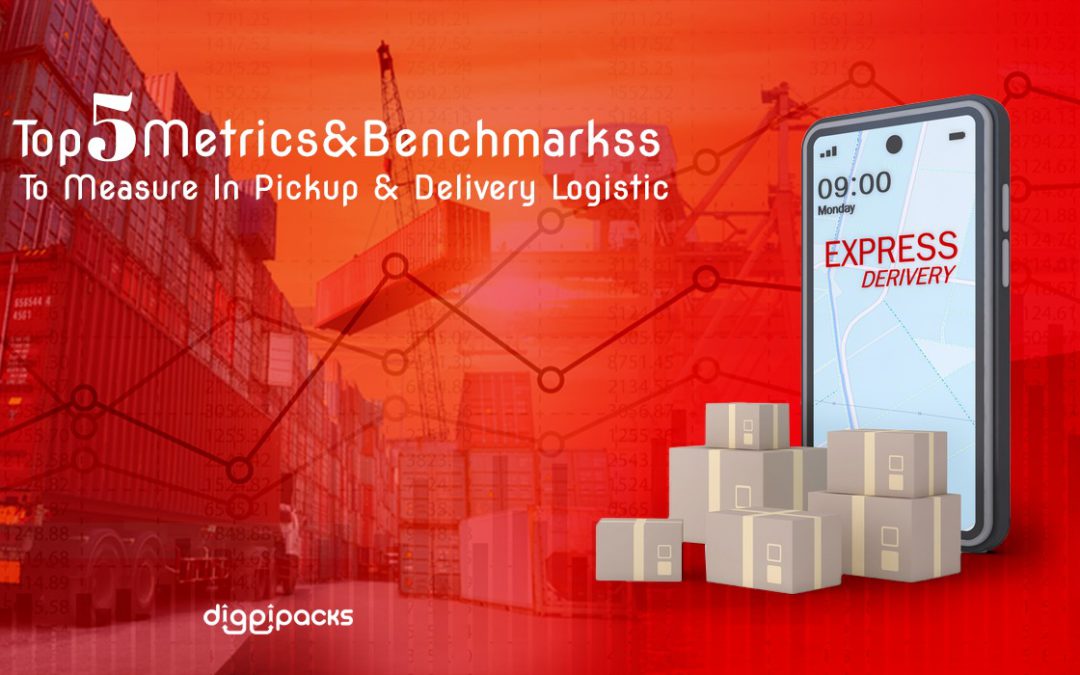Pickup & Delivery Logistics The supply chain consists of several levels designed to produce and distribute goods, ranging from the use of raw materials to the production of finished products. Without successful logistics, workflow can be hampered by delayed shipments and incorrect storage units, when the movement of materials is properly mapped throughout the supply chain. , Companies can improve the efficiency of their warehouses, thus companies can benefit from investing their time and efforts in ensuring that their logistics management can appropriately coordinate all transportation needs, and in this article we will address together Top 5 Metrics & Benchmarks to measure in Pickup & Delivery Logistics.
Pickup & Delivery Logistics
Pickup & Delivery Logistics Without metrics that you use to analyze the appropriate data for your business, the process of managing the work will be very difficult, and for the Pickup & Delivery Logistics, you will need a number of metrics and standards in order to be able to manage the process and evaluate the success of your organization.
Top Metrics & Benchmarks to measure In Pickup & Delivery Logistics

There are a number of important metrics used in Pickup & Delivery Logistics, which any company can use to measure its performance, thus knowing how well it can achieve its goals. Here are the Top 5 Metrics & Benchmarks to Measure in Pickup & Delivery Logistics :
1. On-Time Pickup Percentage
One of the most important metrics that is used, and in general, we calculate the percentages of receipts at a time by dividing the total number of receipts on time by the total number of shipments in a given period.
This criterion helps you to know the performance of the shipping logistics company and the extent of its impact on your operations and customer service, whether it affects positively or negatively.
An accurate measurement of unsuccessful receipt times will help you identify the most important problems that you may face early, thus preventing any potential obstacles from affecting the product’s delivery to the appropriate destination.
This standard also provides you with other benefits, for organizations, knowing the percentage of on-time receipt will help them give them the reason behind the problems that affect product sales.
Shippers will be able to see the timing of the carriers, and how this affects their delivery schedules.
2. Perfect Shipment Measurement
As for this scale, it is called the ideal metric for your request, because it measures the percentage of your requests that were completed without any errors.
The goal of this metric is to enhance your delivery process by gradually finding and eliminating defects, which will help managers know all the causes of failure.
3. On-Time Delivery Adherence

It’s called (MABD), and that’s because it commits to delivery on time, and this metric shows you the average on-time delivery versus the date customers order.
This metric is especially important to merchants, especially retailers, who pay fines for late orders.
This scale can also be used to determine the percentage of items that are delivered on time, as well as knowing their value and when they are available, early or late.
All of this will help you effectively increase the efficiency of your supply chain, by committing to on-time deliveries, and by continuously monitoring and monitoring deliveries.
4. Freight Bill Accuracy
You can measure the accuracy of a freight bill by dividing the total number of error-free shipping invoices by the total number of freight invoices in a period. Learn about : freight broker
And you must note that this scale is measured in general, and every shipping company has a scale for it, and this scale will help you in identifying any problems that may pass.
Its importance is highlighted in that it helps managers identify problems at an early stage, and thus take appropriate measures to solve them before the situation worsens.
All of this will avoid unnecessary fees and costs, and thus reduce transportation costs, which will positively affect your bottom line.
5. Transit Time to Distance
The last metric in our list, which expresses the time it takes for the shipment to leave from your facility and reach the customer, and that period may be in days or hours.
In general, transit times vary according to the shipping method used, the transportation systems themselves, and road conditions as well.
But this metric will help you monitor transit time, thereby improving that process and knowing the factors that may affect the transportation process while minimizing them as much as possible.

